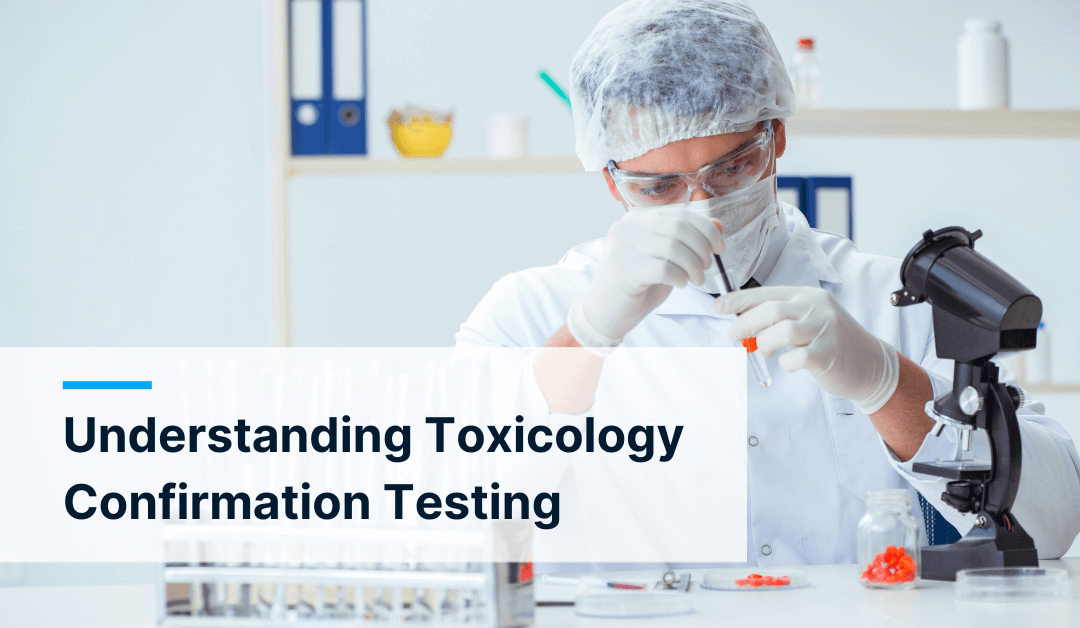 Understanding Confirmatory Drug Testing and Screening" width="1080" height="675" />
Understanding Confirmatory Drug Testing and Screening" width="1080" height="675" />  Understanding Confirmatory Drug Testing and Screening" width="1080" height="675" />
Understanding Confirmatory Drug Testing and Screening" width="1080" height="675" />
Before adding toxicology testing to your practice or lab to help serve the needs of your local community, it’s important to understand how a standard drug screening process plays out. From initial screening through confirmatory testing, below is a high-level breakdown of the steps a lab may take when working to confirm a positive sample.
Typically, specimen collection for standard oral or urine drug test is performed on-site when requested by an employer. It may also be done at a laboratory where the laboratory technicians or medical staff read the results. Additionally, there are some urine drug test products available for home testing or instant reading of the results on-site.
These rapid drug tests are also known as instant tests because results are provided immediately on-site. With the rapid drug test, the results are negative or positive. Rapid drug tests are lateral flow tests based on the immunoassay method that describes the interaction between the target and its corresponding antibody. In most cases, the results from rapid drug tests are being read by an officer or a safety manager at the point of collection.
Alternatively, when a sample (i.e. oral fluid, urine) is sent to the laboratory, it undergoes an initial screening process to make a distinction between positive and negative samples. It’s the lab’s job to then ensure the results provided are accurate and reliable. If the initial screening reveals the presence of a drug or a metabolite, the sample is examined in more detail to identify the drug and its concentration through a process known as confirmation testing.
At this stage, a positive result for any of the tested drugs is considered presumptive as it only indicates the possible presence of the drug or metabolites in the specimen but does not quantify the concentration of drugs.
A confirmatory drug test, or confirmation test, is a second test conducted after drugs have been detected during an initial drug screening test. This follow-up test is performed on a different sample, or aliquot, taken from the same specimen and is used to determine the type and quantity of drug or drug metabolite present in the sample. A confirmation test may sometimes also be referred to as a directed analysis.
Utilizing this two-test authentication of positive results is intended to reduce false positives and provide greater confidence in results.
As an industry standard, a confirmatory drug test is done with a different scientific method to nearly eliminate the chance of a false positive test. Confirmation tests are conducted via either gas chromatography- mass spectrometry (GC-MS) or liquid chromatography- mass spectrometry (LC-MS) depending on the specimen type being tested.
Keep in mind that clinical consideration and professional judgment should be applied to any test result, particularly when preliminary positive results are indicated. There is a possibility that technical or procedural errors, as well as other substances and factors, may interfere with the test and cause false results.
Do you not currently offer drug screening, but are exploring the possibility of starting a toxicology laboratory to serve the needs of your local area?
Lighthouse also builds CLIA-certified labs for existing practices and local communities. Our team provides true end-to-end laboratory setup with an average launch time of 35 days! Whether you’re looking to build a lab from the ground up, add new lines of testing for emerging street drugs, or simply add testing capacity, we’re here to help!
Contact us today for a free consultation to get started.